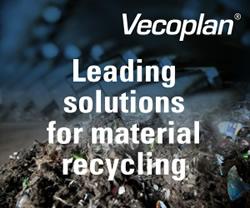SPI 15 - SEPA to Launch Phase II of 51st State Initiative at SPI
New crowdsourcing effort to develop road maps for energy sector transition
WASHINGTON, DC -- Energy sector transformation is one of the hottest topics for solar and utility industry leaders heading to Anaheim next week for Solar Power International (SPI).
And it is on this broad national stage that the Solar Electric Power Association (SEPA) will roll out Phase II of its 51st State Initiative, a unique effort to develop new visions and practical road maps for the changes all energy sector stakeholders know are ahead, if not already under way.
"We launched Phase I of the 51st State Initiative a year ago, as a way to transcend the divisiveness in conversations about how to move ahead with integration of solar and other distributed energy resources on the grid," said Julia Hamm, President and CEO of SEPA. "Our goal for Phase II is to keep these productive conversations going -- with a focus on common goals, stakeholder collaboration and workable solutions."
· Phase II guidelines are now available for journalists -- embargoed until Tuesday, Sept. 15 -- and SEPA officials will be available throughout the event for interviews. Guidelines are attached.
· Journalists are also invited to a breakfast event at the SEPA booth at SPI at 10 a.m, on Sept. 15, when several authors of Phase I papers will be present.
Announced at last years SPI, Phase I of the initiative challenged participants to envision an energy market that would optimize integration of solar and other distributed energy resources (DERs) as if for a hypothetical new state with no existing regulatory or market structures. More than a dozen papers were submitted.
Phase II extends the challenge, this time asking for detailed road maps for the transition from todays utility and regulatory models to those that will both optimize solar and DERs, and ensure that customers have safe, affordable, reliable and cleaner energy. Specifically, each road map will have to address six key energy sector elements or "lanes": retail market design, wholesale market design, utility business models, asset deployment, information technology, and rates and regulation.
"Distributed energy resources like energy efficiency and distributed solar are becoming increasingly important parts of our nations energy mix, and we need to be thoughtful about how we evolve as an industry to ensure the transition is as smooth as possible for customers, market players and providers of last resort," said Ralph Izzo, Chairman, President and CEO of PSEG. Izzo is a member of the Executive Leadership Council (ELC) that will steer Phase II.
"The 51st State Initiative is important, both because of its national focus and because SEPA is able to bring together all those who envision a more distributed, clean energy future in a truly constructive dialogue," said Steve Corneli, NRG Energy's Senior Vice President for Policy and Strategy, and another ELC member. "It is a great complement to the various state-level 'utility of the future' efforts currently underway."
Phase II road map submissions will be due Wednesday, March 9, 2016. A 51st State Summit focusing on the road maps is planned for April 14, 2016 in Denver.
All Phase I documents are available on the 51st website, www.sepa51.org
About SEPA: The Solar Electric Power Association (SEPA) is an educational nonprofit organization working to enable the transition to a clean energy economy by facilitating utility integration and deployment of solar, distributed energy resources and supporting technologies onto the grid. With members representing all aspects of the utility and distributed energy resource industries, SEPA provides research, technical advisory services, and educational and professional networking opportunities.
Featured Product

Vecoplan - Planning and implementation of complete processing plants in refuse derived fuel production
In order to reduce the costs involved in the energy-intensive production of cement, many manufacturers are turning to refuse-derived fuels (RDF), considerably reducing the proportion of expensive primary fuels they would normally use. Solid fuels are being increasingly used - these might be used tyres, waste wood or mixtures of plastics, paper, composite materials and textiles. Vecoplan provides operators of cement plants with proven and robust components for conveying the material and separating iron and impurities, efficient receiving stations, storage systems and, of course, efficient shredders for an output in various qualities.
